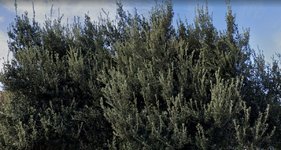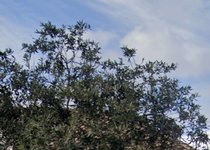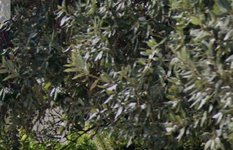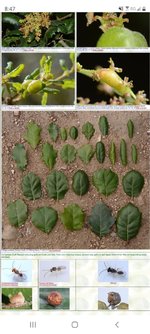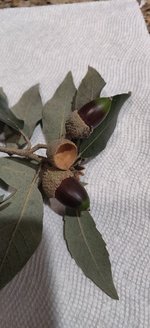Wulfskaar
Omono
I found some oak trees while taking a walk this morning, but don't know what they are. I thought they looked like Laurel Oaks because of the leaves, but when I looked up the acorns online, they did not look the same. Laurel Oak acorns look round and these are long. The closest I could find may be an Escarpment Oak (Q. fusiformis). I did not get any pics up close... these are from google street view (sorry for bad quality!). I'll be sowing the acorns regardless of what it is, but it would be nice to know. Thanks!
